Most Tender Cut of Beef for Stew
This Chinese Braised Beef Stew is a famous yet very homey Cantonese dish, and now is the time of yr to set up information technology!
The ingredients are simple, beefiness, daikon radish (besides sometimes translated equally "turnips" in English), ginger, scallion, star anise, cloves, bay leaves, and Shaoxing wine.
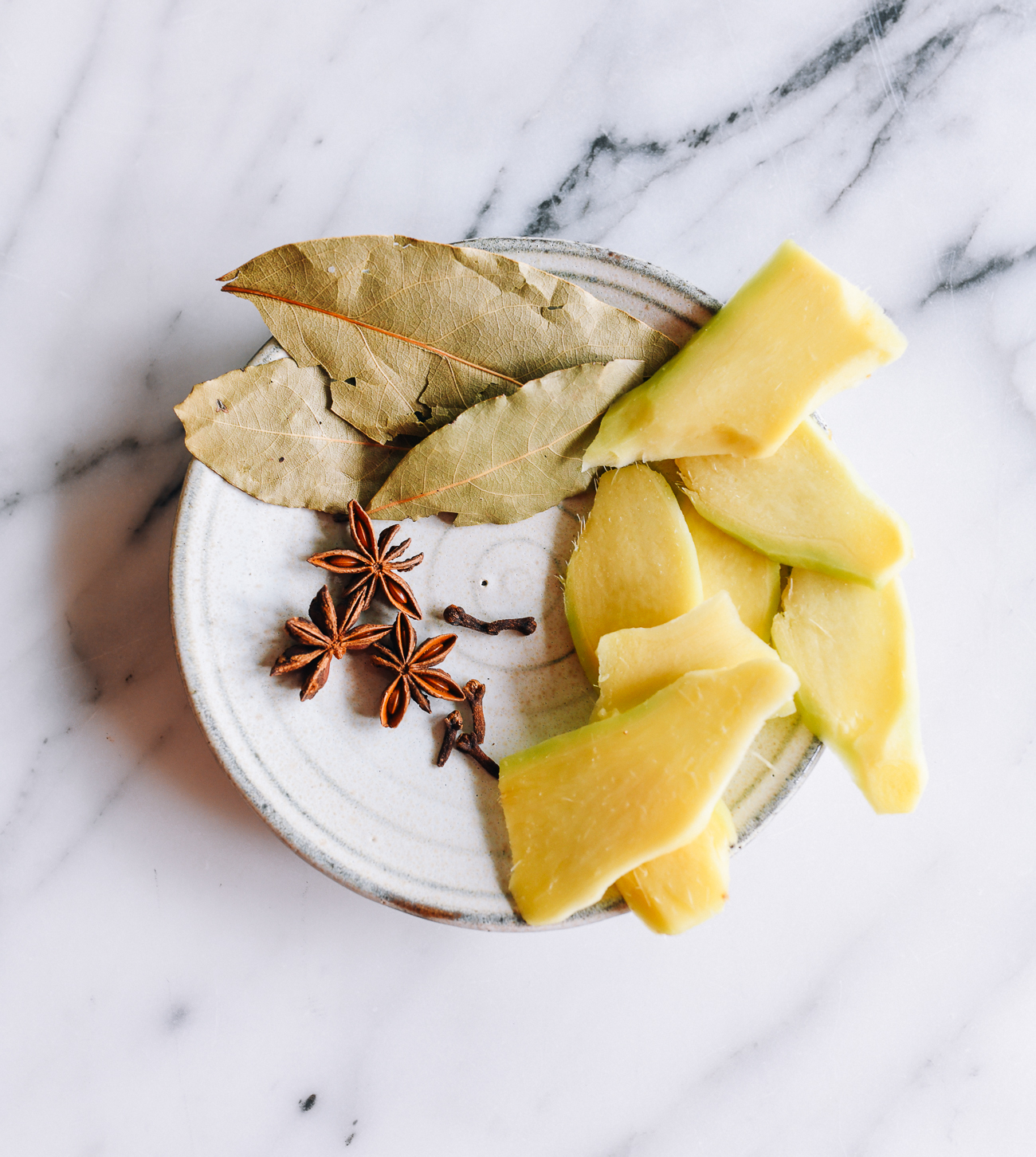
All you need is a big pot and some fourth dimension (about 3 hours). It is very much like making a Western beef stew, in that you throw the beef into a pot with liquid, melt it for a long time, and so add together vegetables and cook until they're tender. (So everything is at the right doneness at the same time!)
Get this dish started in the afternoon, and go do some laundry, get back to work, or re-grout your bath (that's what We did when we first blogged this recipe). It's a tasty dinner with a side of rice to soak upwardly the sauce, and some stir-fried leafy greens.
Note: This recipe was beginning published in October 2013. Information technology was one of the very kickoff recipes we ever published on the blog! (Meet how different our photos used to look??) Nosotros have since re-tested it, so here is the new and improved version, with new photos, clearer instructions, and metric measurements. If you'd similar to encounter the old recipe, scroll down to the bottom of the post!

The Cut of Beefiness Traditionally Used In This Recipe
In this recipe, we call for a cut of beef that you may have never heard of. Information technology'south called "rough flank." Known as niúnǎn (牛腩)in Mandarin, orngau lamin Cantonese, this is not to exist confused with flank steak!
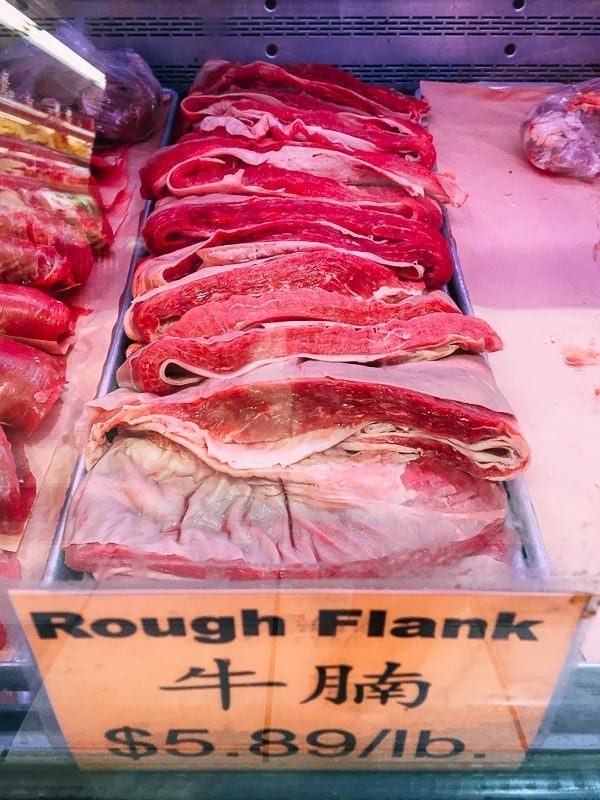
Equally you can come across in the photo to a higher place, there are tough connective tissues on this piece of meat, which is why the dish has to exist braised for a long time.
While this cut of meat isn't the almost popular here in the U.Due south. mostly, you'll observe it in Chinese and Southeast Asian grocery stores. Those gelatinous bits add texture as well as flavour to the final dish.
If you tin't find rough flank…
Substitute another tougher cut of meat, such as beef chuck. We adopt a well-marbled beefiness chuck over something like brisket, because nosotros find brisket tends to be rather dry out after braising. Note that beef chuck will likely take less time to melt, so y'all may want to reduce the cooking time by about twenty minutes, or simply check it until it's at the level of tenderness you prefer.
The Other Main Ingredient: Daikon Radish
Daikon radish, or luóbo (萝卜) in Mandarin andlo bakin Cantonese, is a big, bright white radish with green leaves (you lot can really consume the leaves too!).
We add together them to soups and stews similar this one, or brand dishes like Boiled Daikon and Stir-fried Daikon with Carrots. They add a special season to this dish, and are every bit large a part of it as the beef!
When shopping for daikon, look for firm, shiny white radishes around ten-inches long. They should be heavy, which ways they oasis't dried out, with smooth skin that doesn't have whatever brown spots on it. Look for fresh green tops, another indication of freshness.
On to the recipe!
Recipe Instructions
Add together the beef to a big pot, and add plenty water to cover the beef. Place over high heat, bring to a boil, and cook the beef for 1 minute. (We used a pot that was a fleck too small in the photo beneath.)
You volition see scum and foam ascension to the pinnacle of the water.
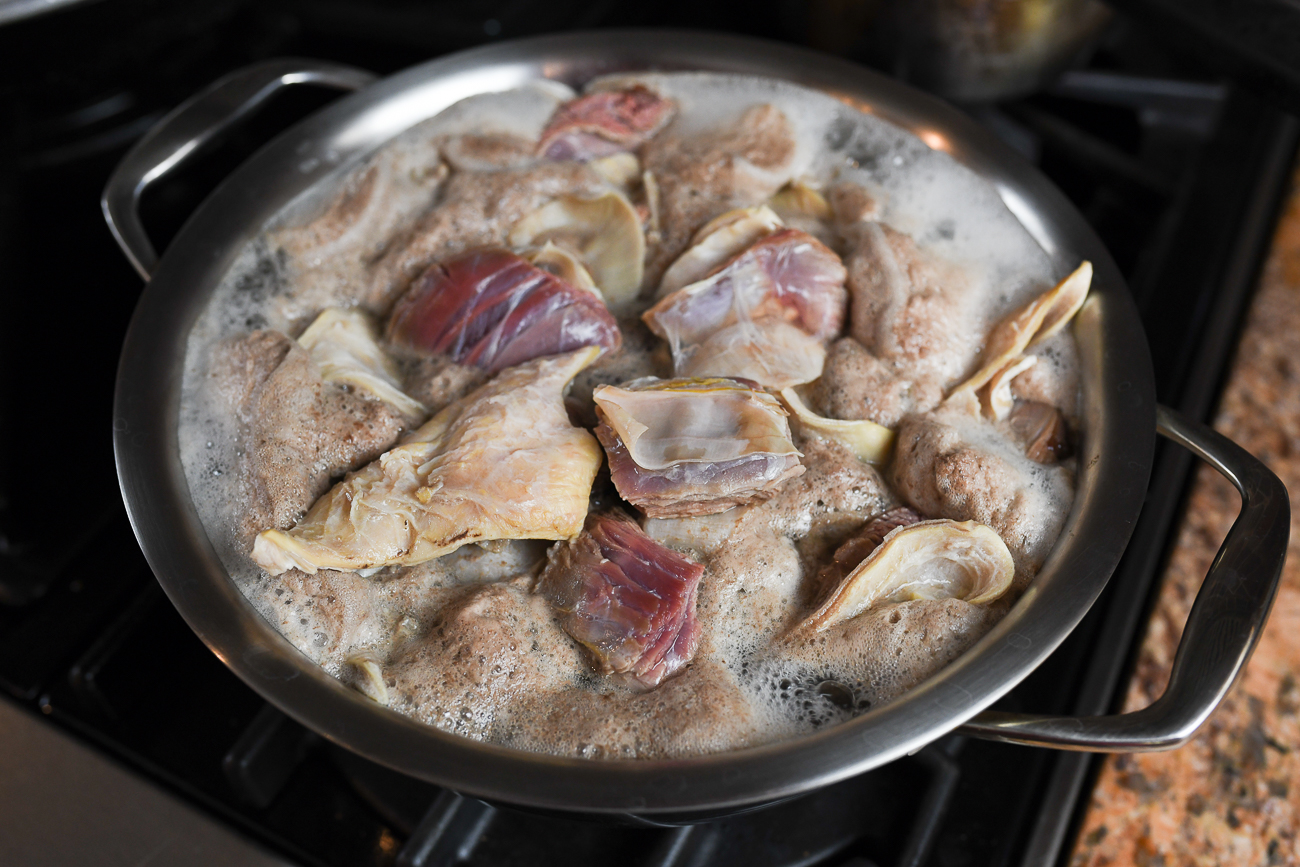
Remove from heat, drain, and rinse the beef chunks clean. Set aside.
Heat the oil in a Dutch oven or other thick bottomed pot over medium estrus, and add together the ginger, cloves, star anise, and bay leaves. Cook for 2-three minutes until fragrant.
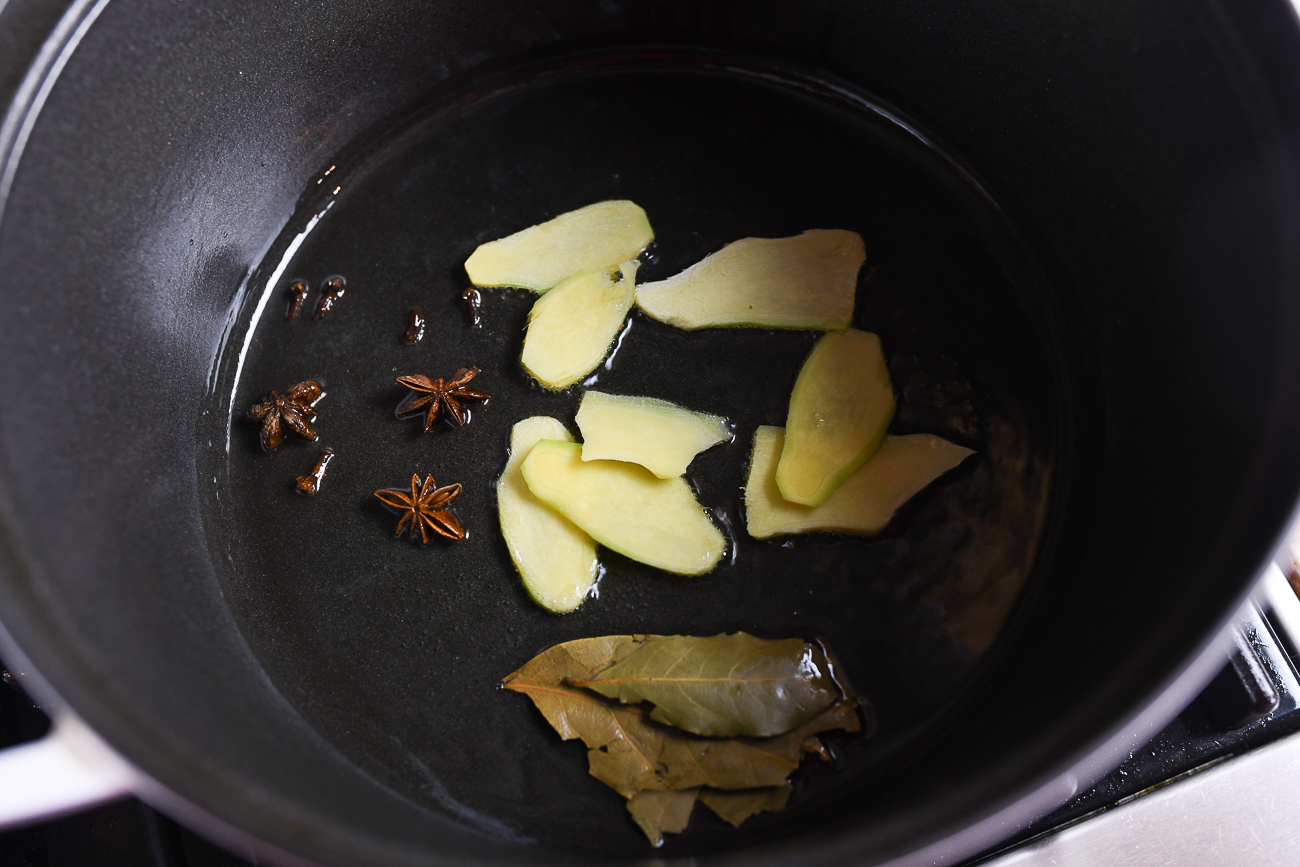
Increase the heat to high, and add together the beef back to the pot. Cook for 8-ten minutes, until the pieces of beef are lightly browned around the edges.
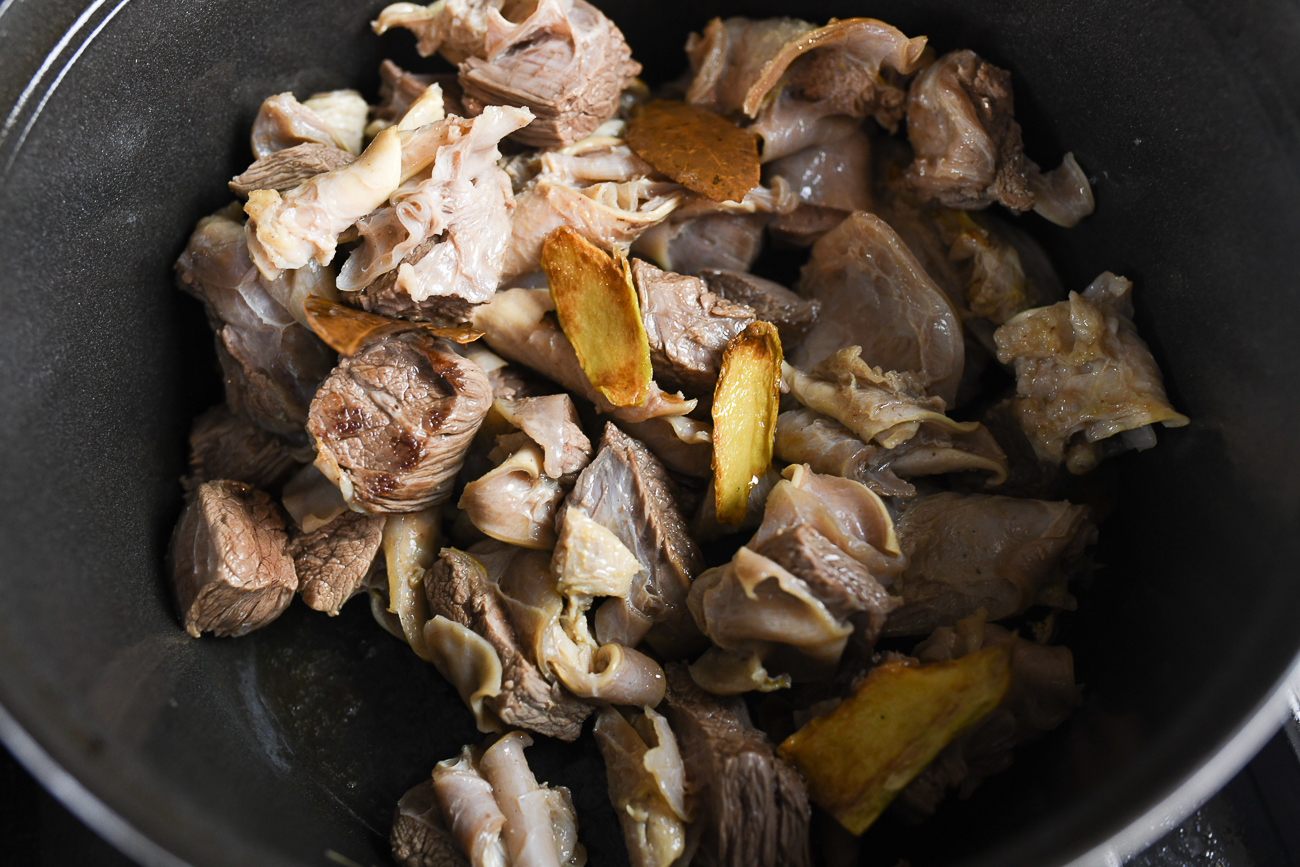
Stir in the Shaoxing wine, light soy sauce, dark soy sauce, and oyster sauce, and bring to a boil. Once boiling, add the water and sugar.
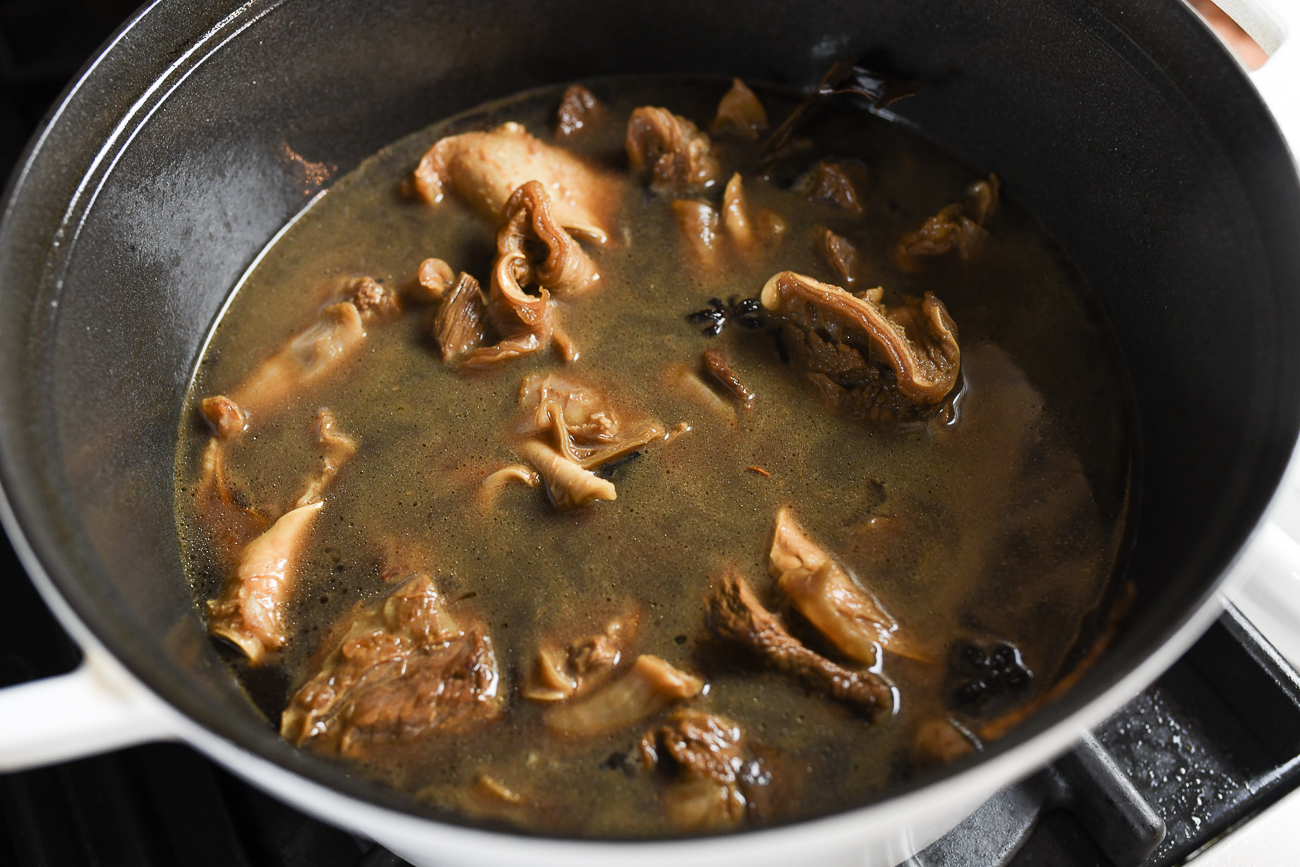
Cover the pot, and bring it to a boil in one case again. One time boiling, reduce the heat to medium-low, comprehend, and simmer for xc minutes to two hours. The liquid should be at a deadening bubble. Stir the pot occasionally to prevent sticking or burning.
Then, add the daikon…
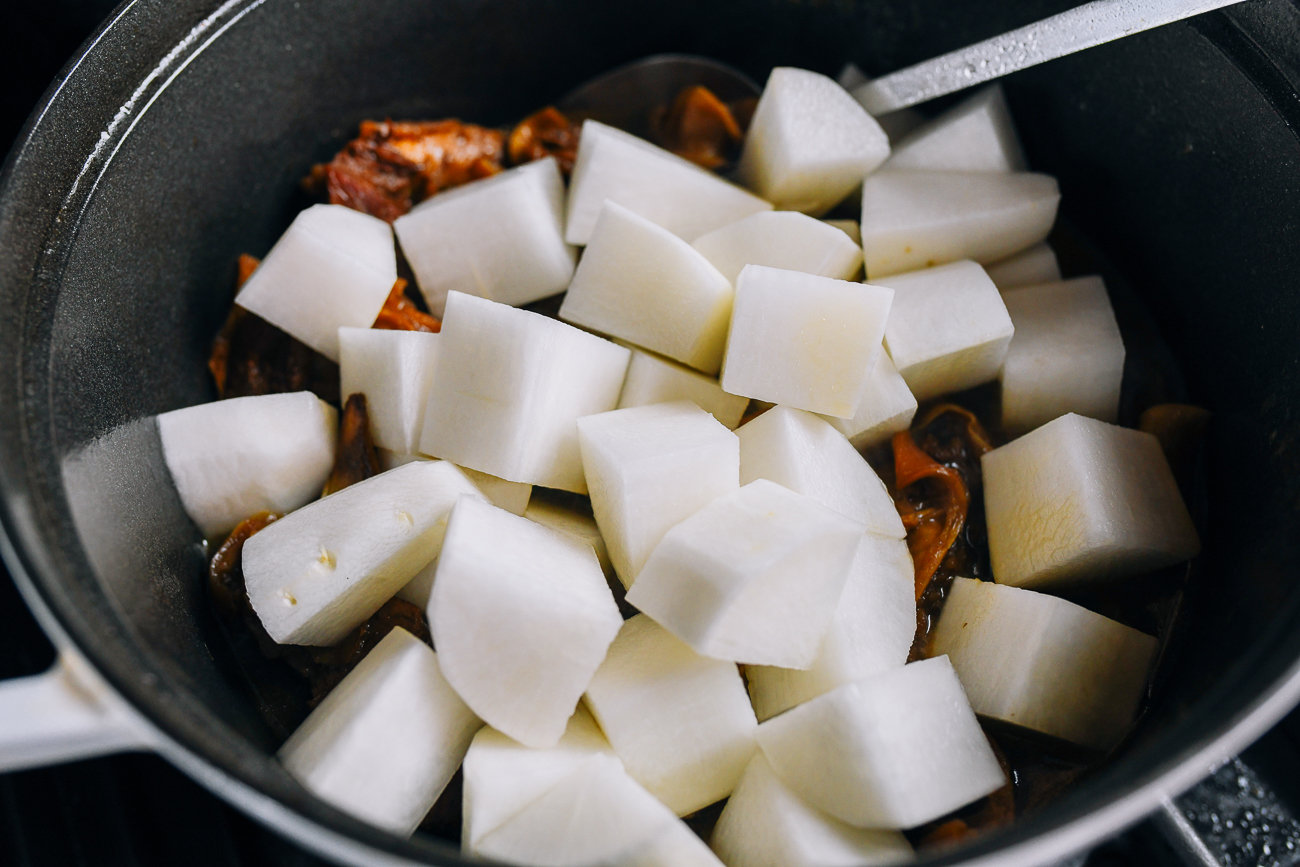
And gently stir information technology in:
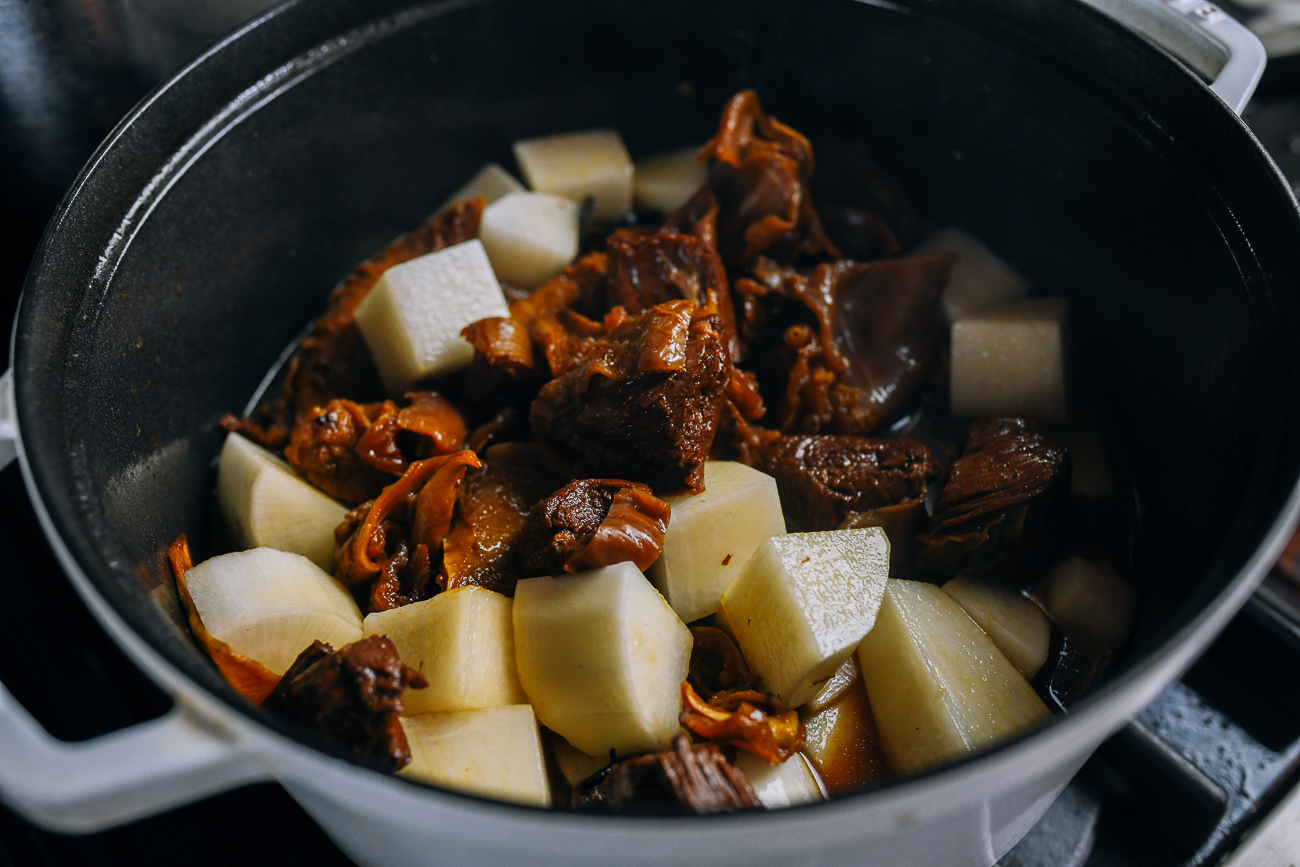
Keep cooking for another 45 minutes, until the daikon is tender.
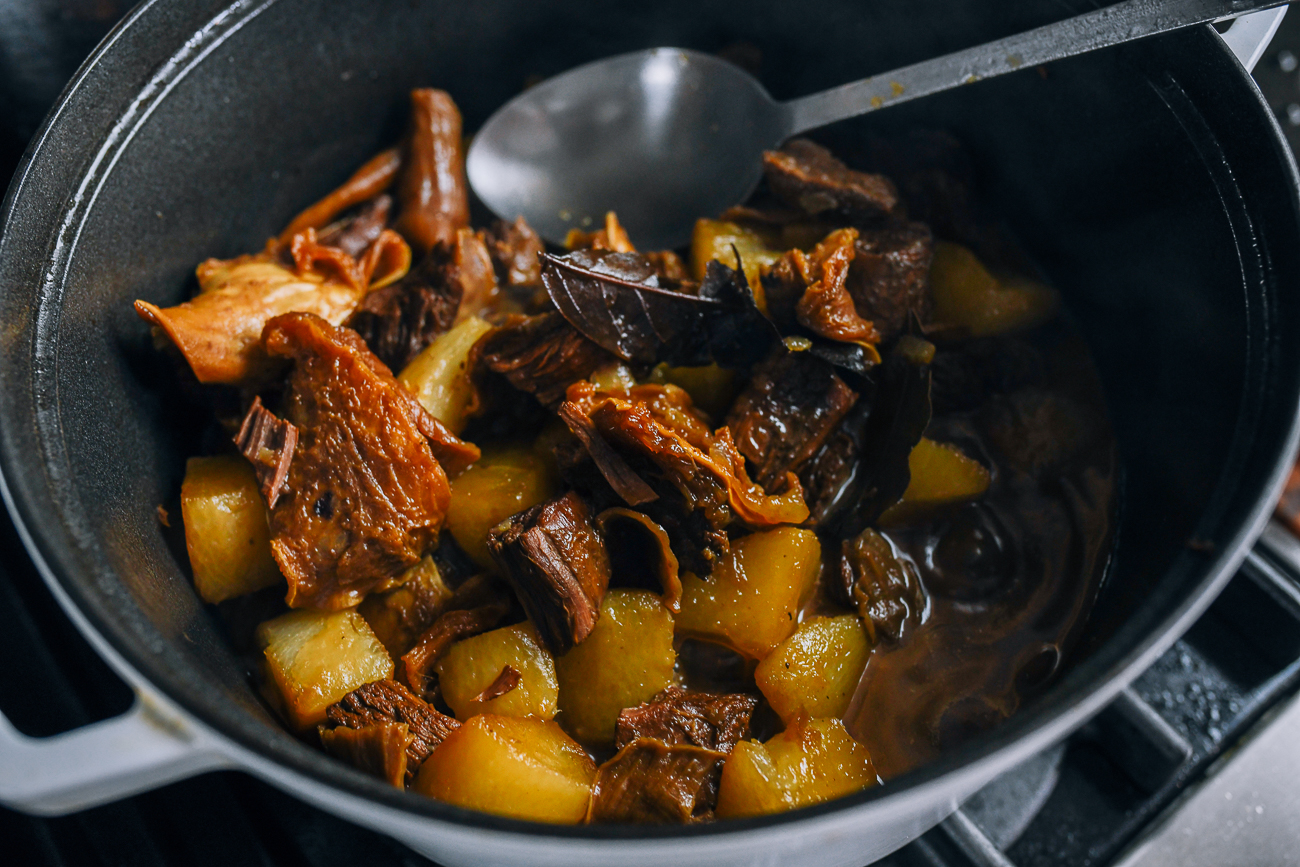
Season with salt to gustation, and add the scallions just before serving.
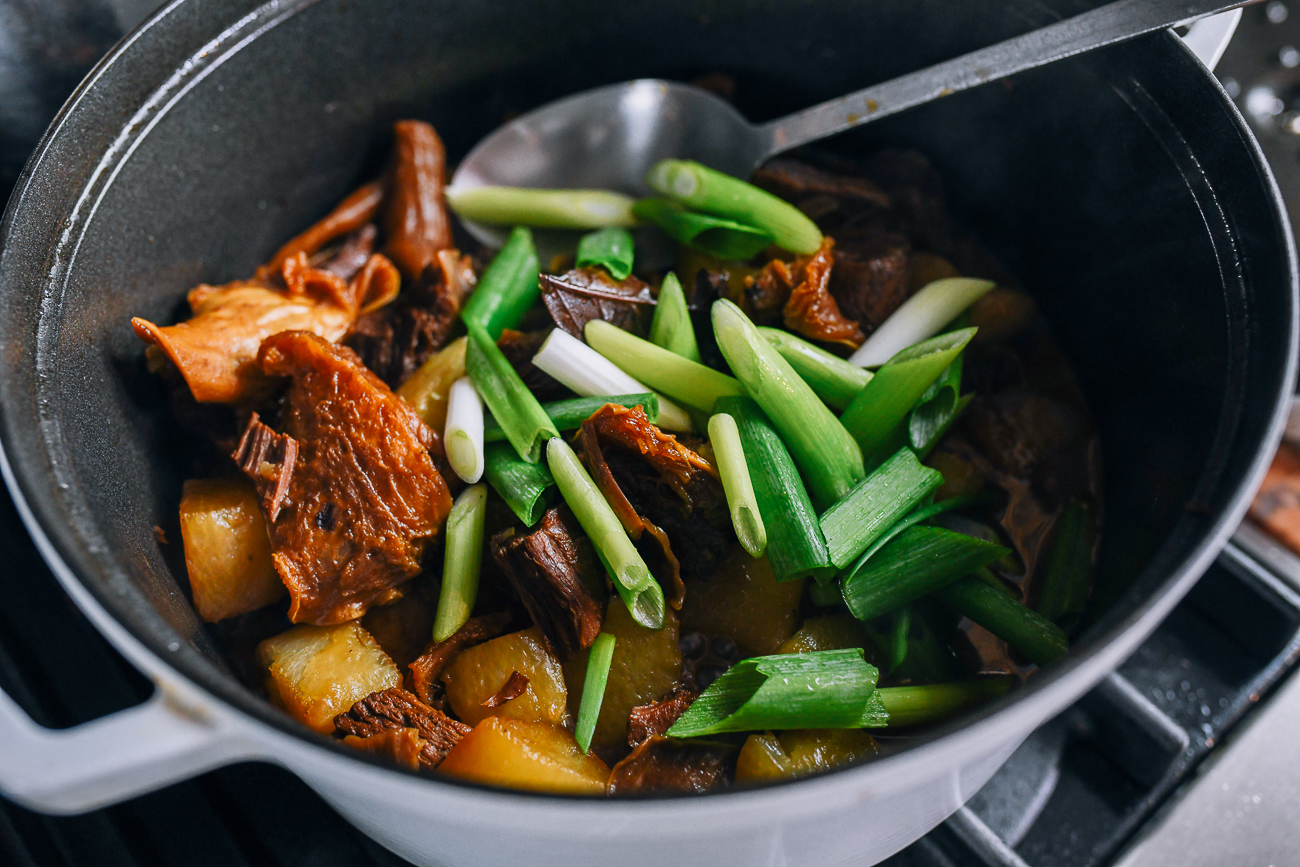
You also have the selection of thickening the sauce before serving. If you lot'd similar to thicken the sauce, combine the cornstarch with two tablespoons of water to make a slurry. Pour the slurry into the bubbling sauce, and stir until the sauce thickens slightly and has a glossy appearance. Add more than slurry if the sauce is however too sparse for your liking.
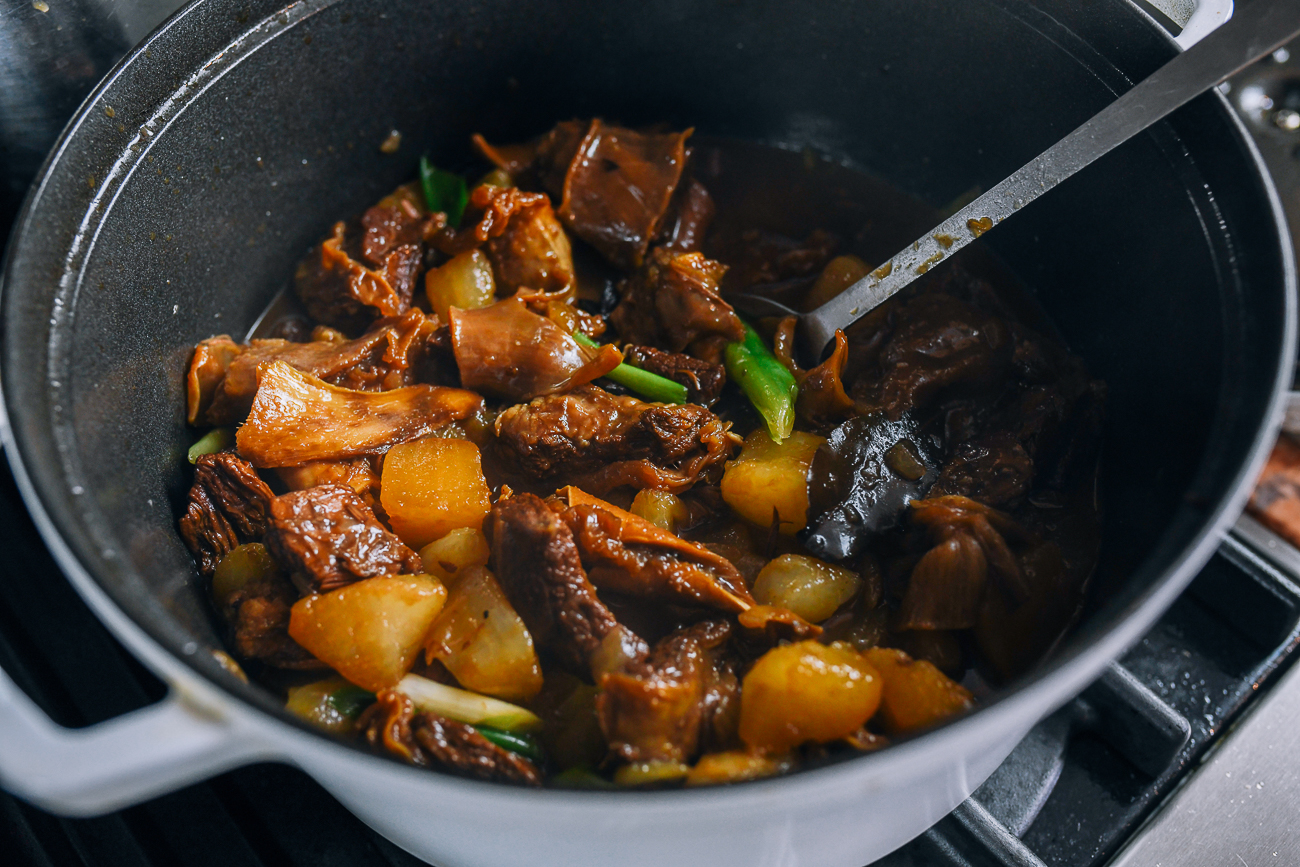
Serve with steamed rice!
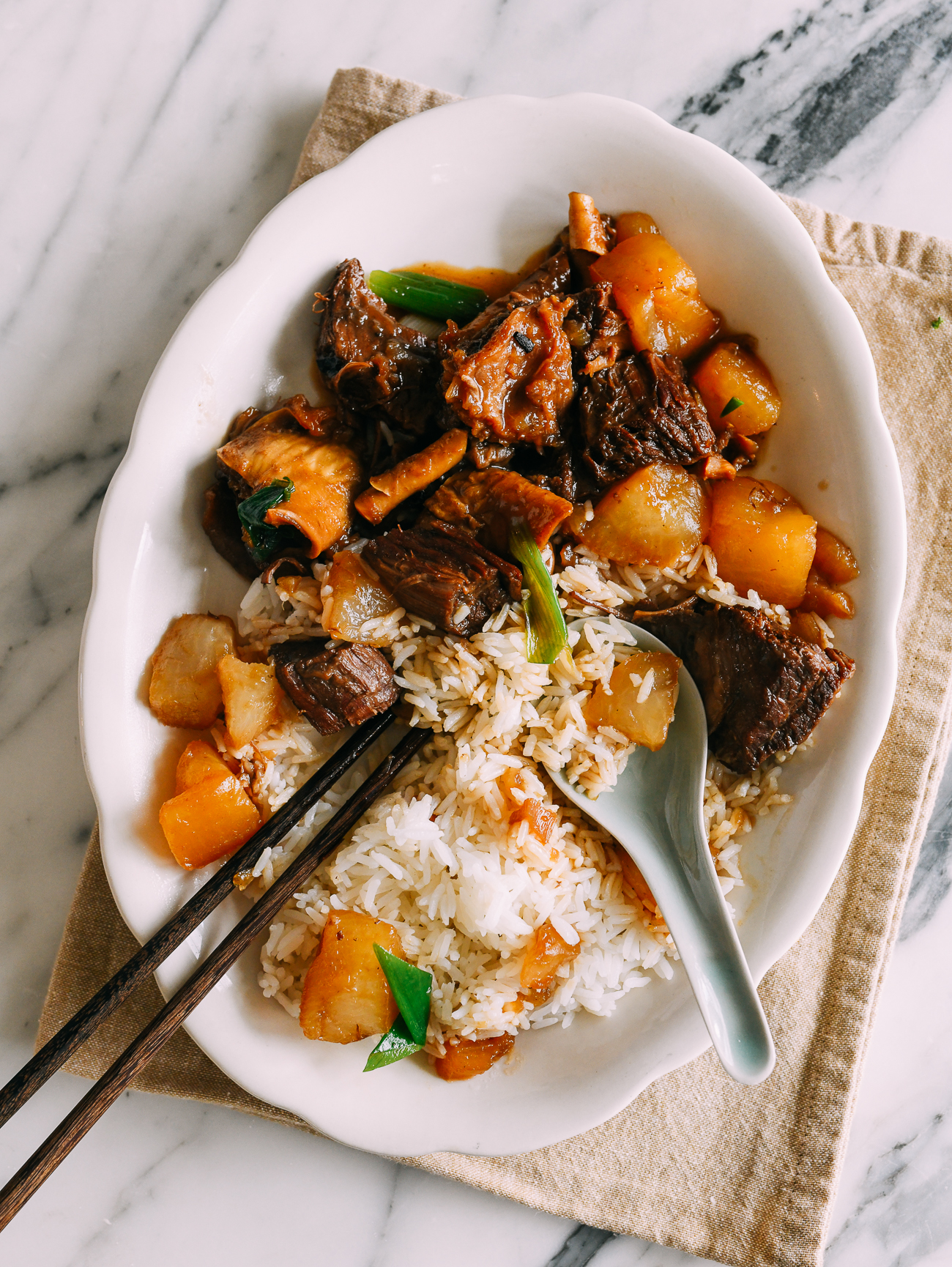
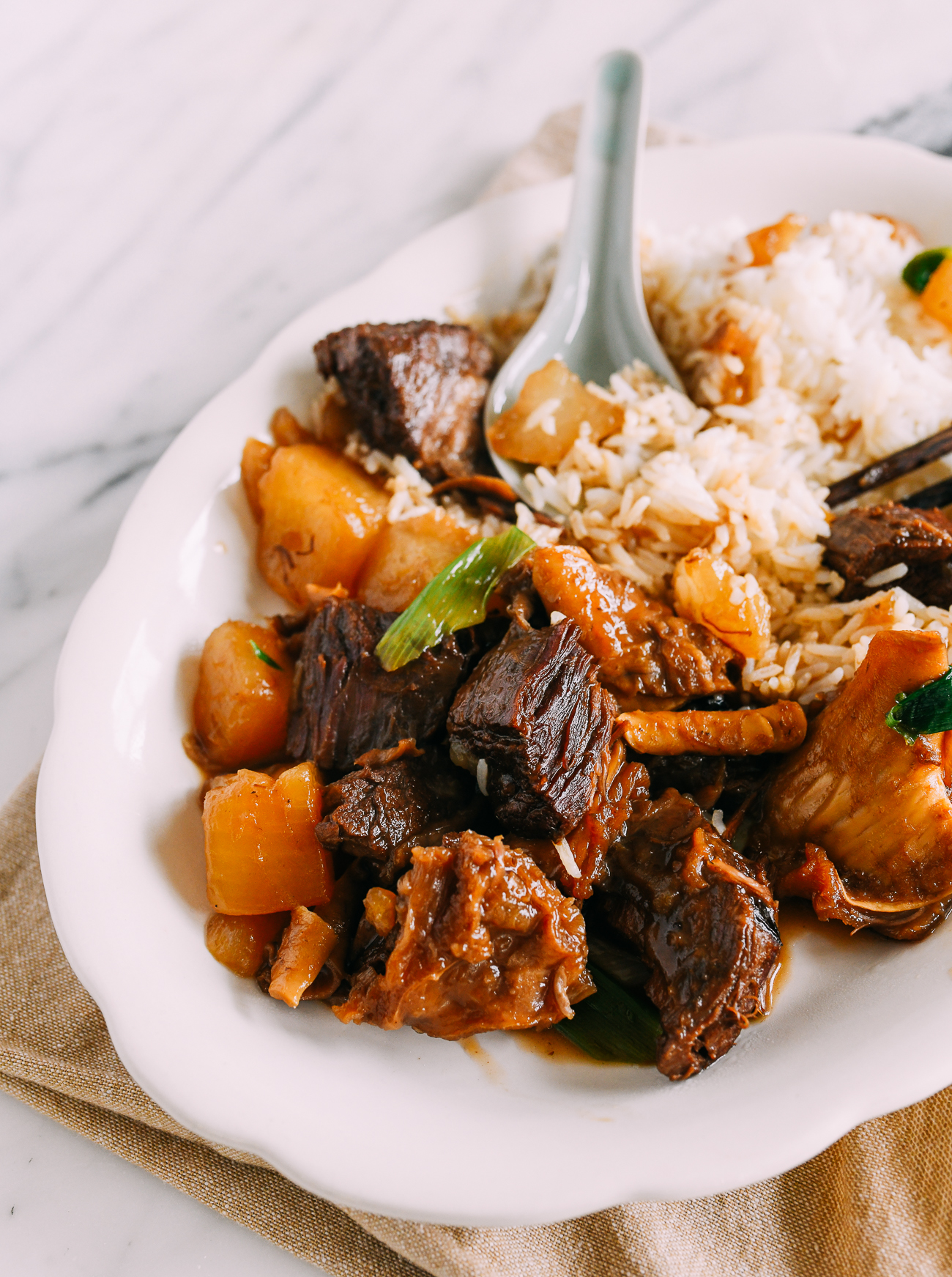
Prep: 15 minutes
Cook: 3 hours
Total: 3 hours 15 minutes
- 3 pounds beef crude flank (cut into i½- to two-inch/4-5cm pieces; tin can substitute well-marbled chuck, which volition take less time to cook)
- 2 tablespoons vegetable oil
- 7 slices ginger
- 5 cloves
- 3 pieces star anise
- iii bay leaves
- one cup Shaoxing vino
- iii tablespoons light soy sauce
- 1 tablespoon dark soy sauce
- 1 tablespoon oyster sauce
- five cups water
- 1 tablespoon sugar
- 2 pounds daikon radish (peeled and cut into 1½- to 2-inch/4-5cm pieces)
- salt (to taste)
- iii scallions (cut on a diagonal into 2-inch pieces)
- ane tablespoon cornstarch (mixed into a slurry with 2 tablespoons h2o, optional)
-
Add the beef to a big pot, and add together enough water to encompass the beef. Place over high heat, bring to a eddy, and melt the beef for 1 minute. You volition encounter scum and cream rise to the top of the water. Remove from heat, drain, and rinse the beef chunks clean. Gear up aside.
-
Heat the oil in a Dutch oven or other thick bottomed pot over medium heat, and add the ginger, cloves, star anise, and bay leaves. Melt for 2-3 minutes until fragrant.
-
Increase the heat to high, and add the beef back to the pot. Cook for 8-10 minutes, until the pieces of beef are lightly browned effectually the edges.
-
Stir in the Shaoxing wine, light soy sauce, dark soy sauce, and oyster sauce, and bring to a boil. One time boiling, add together the h2o and sugar.
-
Encompass the pot, and bring it to a eddy once more. Once boiling, reduce the heat to medium-low, cover, and simmer for 90 minutes to 2 hours, depending on how tough your beef is! The liquid should be at a deadening bubble. Stir the pot occasionally to foreclose sticking or burning.
-
So gently stir in the daikon, and continue cooking for some other 45 minutes, until the daikon is tender. Season with table salt to taste, and add together the scallions but before serving.
-
You also have the option of thickening the sauce earlier serving. If you'd similar to thicken the sauce, combine the cornstarch with ii tablespoons of h2o to make a slurry. Pour the slurry into the bubbling sauce, and stir until the sauce thickens slightly and has a sleeky advent. Add more slurry if the sauce is still also sparse for your liking. Serve with steamed rice!
Calories: 345 kcal (17%) Carbohydrates: 10 one thousand (3%) Protein: 37 g (74%) Fat: 13 g (20%) Saturated Fat: 4 m (20%) Polyunsaturated Fat: i g Monounsaturated Fat: 6 g Cholesterol: 105 mg (35%) Sodium: 732 mg (31%) Potassium: 873 mg (25%) Cobweb: ii g (8%) Sugar: 5 1000 (6%) Vitamin A: 49 IU (ane%) Vitamin C: 26 mg (32%) Calcium: 55 mg (6%) Iron: 4 mg (22%)
Old Version of the REcipe:
- ii pounds beef brisket (900g, done, pat dry and cut into 1 ½ inch pieces)
- 1 tablespoon oil
- 5 slices ginger
- i cup Shaoxing vino
- ii 1/2 tablespoons light soy sauce
- iii star anise
- 8 cloves
- i teaspoon sugar
- 5 cups h2o
- 1 daikon radish(cut into 1 ½ inch pieces)
Prep your beefiness. Heat cooking oil and ginger in a wok or Dutch oven over high oestrus. Add the beef and lightly brown all sides. Now add your cooking wine, light soy sauce, star anise, cloves, sugar, 3 cups of the water and bring everything to a boil. And so plough downwards the heat to simmer for about 90 minutes using depression heat. For simmering, the heat should exist loftier enough that the liquid is moving, merely not humid. Stir the pot occasionally to avert sticking or called-for.
After that, the sauce should be almost dry out. This is a adept fourth dimension to skim out any backlog fat. And so add together the turnips and the terminal 2 cups of h2o. Let the stew to simmer for another 40 minutes, until the turnip is soft and tender. Serve hot over rice.
camachothatted1966.blogspot.com
Source: https://thewoksoflife.com/chinese-braised-beef-turnips/
0 Response to "Most Tender Cut of Beef for Stew"
Post a Comment